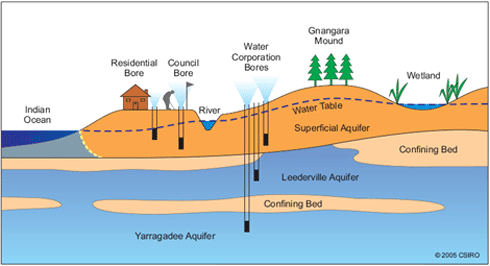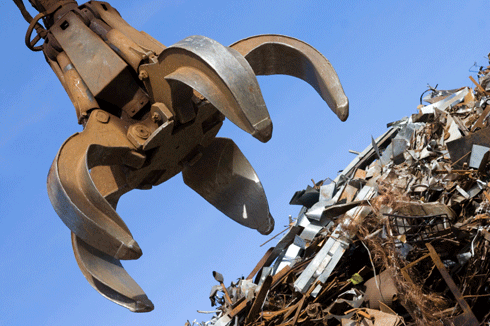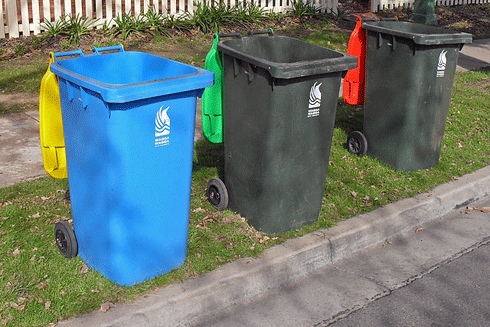
|
Published: 17 January 2013
Many coastal aquifers at risk of seawater intrusion
Invading seawater threatens to pollute or destroy scores of Australia’s coastal water supplies, water scientists have warned. And in many urban areas, thousands of bore owners pump groundwater unabated, leading to a potential ‘tragedy of the commons’.

|
|
Critical coastal aquifers such as those around Perth, which supply most of the city’s water, need to be protected from seawater intrusion caused by over-extraction. Credit:
CSIRO
|
In a recent report for the National Water Commission on the risk of seawater intrusion into coastal aquifers, researchers from the National Centre for Groundwater Research and Training (NCGRT) and Geoscience Australia concluded that more than two-thirds of the aquifers they examined were at moderate to high risk of seawater intrusion.
Hundreds of towns and communities, and thousands of households and farms around Australia’s 35,000-km coastline depend on freshwater drawn from aquifers. Many of these may be taking too much – risking destruction of aquifers by saltwater, says Dr Adrian Werner of NCGRT and Flinders University.
‘A myriad of factors influence seawater intrusion: the geology of the aquifer and its basic properties, the behaviour of groundwater levels, the rate at which water is pumped out of it and the construction of wells, changing sea levels and storm surges.
‘The trouble is, once your groundwater has turned saline, it can be extremely difficult, costly and in some cases impossible, to make it fresh again. Many communities may not realise how close they are to reaching that point.
‘Seawater intrusion is a worldwide issue – and it is getting worse as sea levels rise and coastal communities take more water out of their aquifers.
‘Essentially, as the pressure of freshwater flowing underground into the ocean declines, the seawater pushes back inland, generally taking over the lower parts of the aquifer first.
‘When people withdraw more fresh water from their well or bore, it can pull a “cone” of saltwater up from the deeper, saline layer – and quite quickly the water can become undrinkable.’
Seawater intrusion is difficult and expensive to monitor, due to its complex nature and the expense of constructing groundwater observation networks.
But NCGRT researchers have come up with a low-cost, easy way to calculate if a coastal aquifer is at risk of seawater intrusion.
‘We’ve found that by drilling observation bores between the freshwater bores and the sea and measuring salinity levels in both, you can reliably obtain early warning that your aquifer is at risk,’ says Dr Werner.
This can provide a useful first estimate of the extent of seawater intrusion, enabling managers to better design monitoring works and estimate the vulnerability of specific coastal aquifers to seawater intrusion.
Dr Werner says the information can also be used to develop a sustainable pumping regime, which places limits on the amount of water householders or farmers are allowed to take from their bore.
Unfortunately, he adds, despite extraction limits on groundwater in most coastal communities, over-pumping is still occurring.
‘It is a form of tragedy of the commons taking place in Australia’s coastal water supplies,’ he warns.
‘Once saltwater invades a fresh aquifer, it can be hard to get rid of. Even if you flush the aquifer, the salt can linger in the lower levels and in pockets, especially if it is below sea-level. This means that once an aquifer turns saline, it may be lost for good, even if you stop pumping.’
Examples of communities whose coastal aquifers were found to be highly vulnerable to salt water intrusion were found in Perth and Adelaide, and in regional centres such as Exmouth, Derby, Bunbury and Esperance in WA, Eyre Peninsula in SA, Port Phillip Bay in Victoria, and the Burdekin and Bowen areas of Queensland.
Dr Werner cautions that the level of vulnerability is expected to increase due to the higher sea-level rises and storm surges forecast by the Intergovernmental Panel on Climate Change (IPCC), and rising demand for groundwater by coastal communities.
Source: NCGRT





